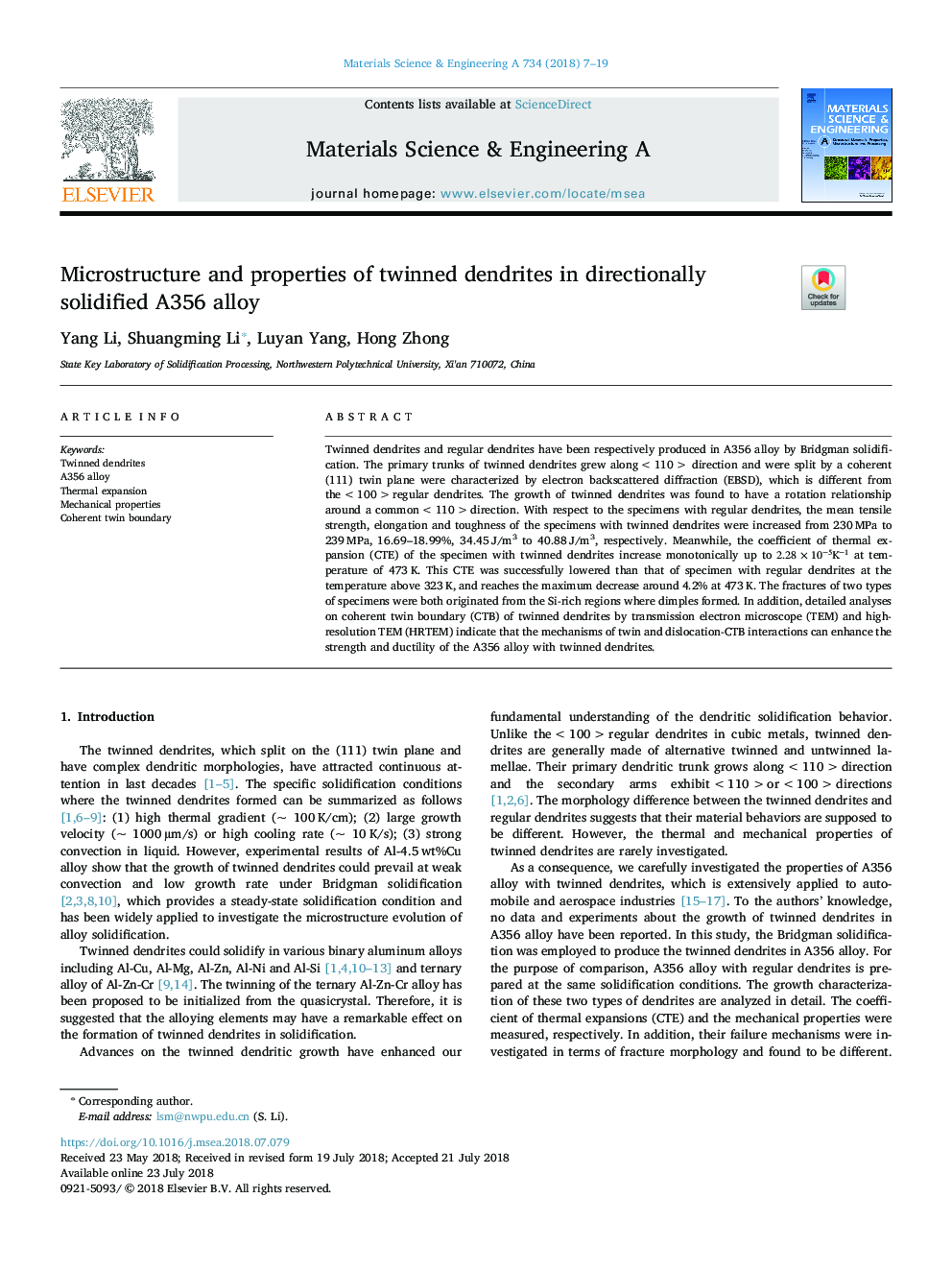| Article ID | Journal | Published Year | Pages | File Type |
|---|---|---|---|---|
| 7971539 | Materials Science and Engineering: A | 2018 | 13 Pages |
Abstract
Twinned dendrites and regular dendrites have been respectively produced in A356 alloy by Bridgman solidification. The primary trunks of twinned dendrites grew along <110>â¯direction and were split by a coherent (111) twin plane were characterized by electron backscattered diffraction (EBSD), which is different from the <100> regular dendrites. The growth of twinned dendrites was found to have a rotation relationship around a common <110> direction. With respect to the specimens with regular dendrites, the mean tensile strength, elongation and toughness of the specimens with twinned dendrites were increased from 230â¯MPa to 239â¯MPa, 16.69-18.99%, 34.45â¯J/m3 to 40.88â¯J/m3, respectively. Meanwhile, the coefficient of thermal expansion (CTE) of the specimen with twinned dendrites increase monotonically up to 2.28Ã10â5Kâ1 at temperature of 473âK. This CTE was successfully lowered than that of specimen with regular dendrites at the temperature above 323âK, and reaches the maximum decrease around 4.2% at 473âK. The fractures of two types of specimens were both originated from the Si-rich regions where dimples formed. In addition, detailed analyses on coherent twin boundary (CTB) of twinned dendrites by transmission electron microscope (TEM) and high-resolution TEM (HRTEM) indicate that the mechanisms of twin and dislocation-CTB interactions can enhance the strength and ductility of the A356 alloy with twinned dendrites.
Related Topics
Physical Sciences and Engineering
Materials Science
Materials Science (General)
Authors
Yang Li, Shuangming Li, Luyan Yang, Hong Zhong,
